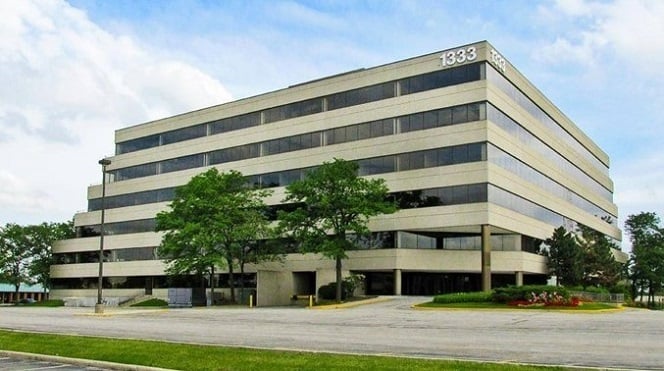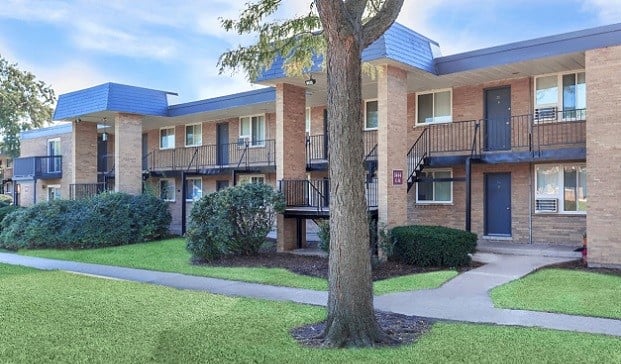
VALHALLA, NY—The Federal Reserve's plan to slowly raise interest rates—at least twice before the year ends—could have the unintended effect of driving up property and casualty claims and insurance costs for middle market commercial real estate investors and owners. So says Geoffrey Pope, VP at USI Insurance Services.
Although the Fed's decision on rates reflects a positive view that the US economy is recovering and no longer needs to be supported by artificially low rates, there's another side to this issue for the real estate industry. Specifically, critically needed capital expenditures such as upgrades to heating and air conditioning systems, roofing, flooring, as well as major electrical and plumbing work could be tabled as real estate companies seek to trim costs and save money in an environment that makes borrowing more expensive.
Over time, say five to 10 years, the pressure for real estate firms to meet cash flow projections will result in further capital expenditure reductions and increased insurance premiums, eventually impacting net incomes and long-term valuations, says Pope. He presents this argument in an exclusive white paper titled, “Interest Rates, Capex, and the Inevitable Real Estate Conundrum.”
Pope expects many real estate firms to find themselves in this conundrum given the considerable capital required “to buy an asset, maintain that asset and hopefully grow and remain competitive.” Several real estate executives cited in the white paper share this view.
For instance, Shelby Christensen, an SVP at Liberty Property Trust, said higher interest rates, combined with challenging financial conditions, “would certainly cause many real estate investors, especially those who lack deep capitalization, to think twice about certain Capex.” Less-capitalized or highly levered real estate investors are disproportionately at risk because they do not have deep cash reserves like larger real estate groups.
And Jerry Sweeney, president and CEO of Brandywine Realty Trust, also agrees the effect on smaller, highly levered real estate developers and investors could be significant. “Capex, [specifically] maintenance and building improvements, is likely to take a hit to counter higher costs across the board,” Sweeney said.
Pope offers specific examples on how deferring capital expenditures and maintenance could impact insurance claims. For instance, in 2016 a Mid-Atlantic based apartment group suffered a devastating loss when boiler exhaust pipes, likely due to rust and corrosion, leaked carbon monoxide and killed several residents. The real estate company involved in this ongoing case is facing millions of dollars in defense costs.
“The importance of depreciation could take on a whole new meaning if your firm finds themselves in this situation,” Pope warns. “Not only will your annual insurance costs increase as a result, but it could lead to even greater inflated or unrealistic valuations, which could have a ripple effect in the industry if you factor in market uncertainty.”
Another potential area of vulnerability: In the event of a catastrophic storm, a real estate company that has deferred roof repairs typically conducted every 10 years could find itself facing a million-dollar repair bill rather than a $100,000 claim for roof damage.
Meanwhile as claims mount against the real estate company, insurance brokers or consultants could lose leverage regarding their ability to negotiate favorable terms and pricing with insurance carriers.
“Increased claims resulting from deferring capital expenditures also would shrink the market as many carriers will deny quoting certain risks,” Pope explains. He adds that for most companies, it will most likely take three to five years for insurance costs to level off since that is usually the length of time the average loss is counted against a company.
Over time, a reduction in Capex will lead to faster degradation of asset quality due to increased competition and changing consumer demands. These will affect long-term cash flow as well as insurance costs.
Pope advises property owners to resist the temptation to reduce Capex reserves when rates increase. A slight increase in Capex will, in fact, give most real estate groups an edge over their competition. It also bodes well for their insurance program and correlated premiums.
Documenting your ability to increase your Capex allocation slightly or maintain current Capex levels is also important, says Pope. While the property insurance market remains competitive, a company that can manage to at least maintain its current Capex levels, and improves or maintains a good loss ratio, would have a competitive advantage over its peers, he says.
Also, Pope suggests that instead of reducing Capex, real estate companies should seek tailored insurance programs, comprehensive coverages and cost-effective risk management programs. To receive a copy of the white paper, contact [email protected].

VALHALLA, NY—The Federal Reserve's plan to slowly raise interest rates—at least twice before the year ends—could have the unintended effect of driving up property and casualty claims and insurance costs for middle market commercial real estate investors and owners. So says Geoffrey Pope, VP at USI Insurance Services.
Although the Fed's decision on rates reflects a positive view that the US economy is recovering and no longer needs to be supported by artificially low rates, there's another side to this issue for the real estate industry. Specifically, critically needed capital expenditures such as upgrades to heating and air conditioning systems, roofing, flooring, as well as major electrical and plumbing work could be tabled as real estate companies seek to trim costs and save money in an environment that makes borrowing more expensive.
Over time, say five to 10 years, the pressure for real estate firms to meet cash flow projections will result in further capital expenditure reductions and increased insurance premiums, eventually impacting net incomes and long-term valuations, says Pope. He presents this argument in an exclusive white paper titled, “Interest Rates, Capex, and the Inevitable Real Estate Conundrum.”
Pope expects many real estate firms to find themselves in this conundrum given the considerable capital required “to buy an asset, maintain that asset and hopefully grow and remain competitive.” Several real estate executives cited in the white paper share this view.
For instance, Shelby Christensen, an SVP at Liberty Property Trust, said higher interest rates, combined with challenging financial conditions, “would certainly cause many real estate investors, especially those who lack deep capitalization, to think twice about certain Capex.” Less-capitalized or highly levered real estate investors are disproportionately at risk because they do not have deep cash reserves like larger real estate groups.
And Jerry Sweeney, president and CEO of Brandywine Realty Trust, also agrees the effect on smaller, highly levered real estate developers and investors could be significant. “Capex, [specifically] maintenance and building improvements, is likely to take a hit to counter higher costs across the board,” Sweeney said.
Pope offers specific examples on how deferring capital expenditures and maintenance could impact insurance claims. For instance, in 2016 a Mid-Atlantic based apartment group suffered a devastating loss when boiler exhaust pipes, likely due to rust and corrosion, leaked carbon monoxide and killed several residents. The real estate company involved in this ongoing case is facing millions of dollars in defense costs.
“The importance of depreciation could take on a whole new meaning if your firm finds themselves in this situation,” Pope warns. “Not only will your annual insurance costs increase as a result, but it could lead to even greater inflated or unrealistic valuations, which could have a ripple effect in the industry if you factor in market uncertainty.”
Another potential area of vulnerability: In the event of a catastrophic storm, a real estate company that has deferred roof repairs typically conducted every 10 years could find itself facing a million-dollar repair bill rather than a $100,000 claim for roof damage.
Meanwhile as claims mount against the real estate company, insurance brokers or consultants could lose leverage regarding their ability to negotiate favorable terms and pricing with insurance carriers.
“Increased claims resulting from deferring capital expenditures also would shrink the market as many carriers will deny quoting certain risks,” Pope explains. He adds that for most companies, it will most likely take three to five years for insurance costs to level off since that is usually the length of time the average loss is counted against a company.
Over time, a reduction in Capex will lead to faster degradation of asset quality due to increased competition and changing consumer demands. These will affect long-term cash flow as well as insurance costs.
Pope advises property owners to resist the temptation to reduce Capex reserves when rates increase. A slight increase in Capex will, in fact, give most real estate groups an edge over their competition. It also bodes well for their insurance program and correlated premiums.
Documenting your ability to increase your Capex allocation slightly or maintain current Capex levels is also important, says Pope. While the property insurance market remains competitive, a company that can manage to at least maintain its current Capex levels, and improves or maintains a good loss ratio, would have a competitive advantage over its peers, he says.
Also, Pope suggests that instead of reducing Capex, real estate companies should seek tailored insurance programs, comprehensive coverages and cost-effective risk management programs. To receive a copy of the white paper, contact [email protected].
Want to continue reading?
Become a Free ALM Digital Reader.
Once you are an ALM Digital Member, you’ll receive:
- Breaking commercial real estate news and analysis, on-site and via our newsletters and custom alerts
- Educational webcasts, white papers, and ebooks from industry thought leaders
- Critical coverage of the property casualty insurance and financial advisory markets on our other ALM sites, PropertyCasualty360 and ThinkAdvisor
Already have an account? Sign In Now
*May exclude premium content© 2025 ALM Global, LLC, All Rights Reserved. Request academic re-use from www.copyright.com. All other uses, submit a request to [email protected]. For more information visit Asset & Logo Licensing.








